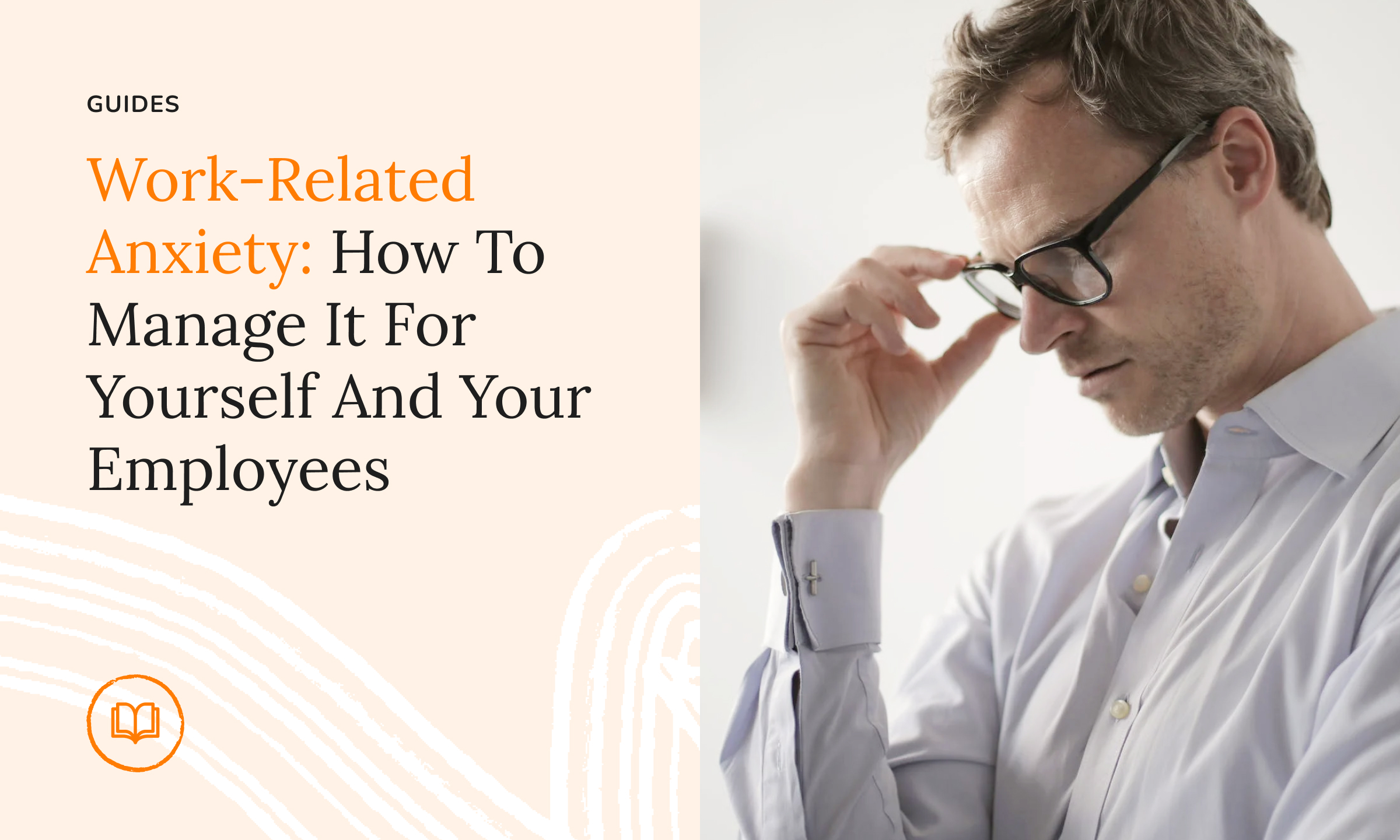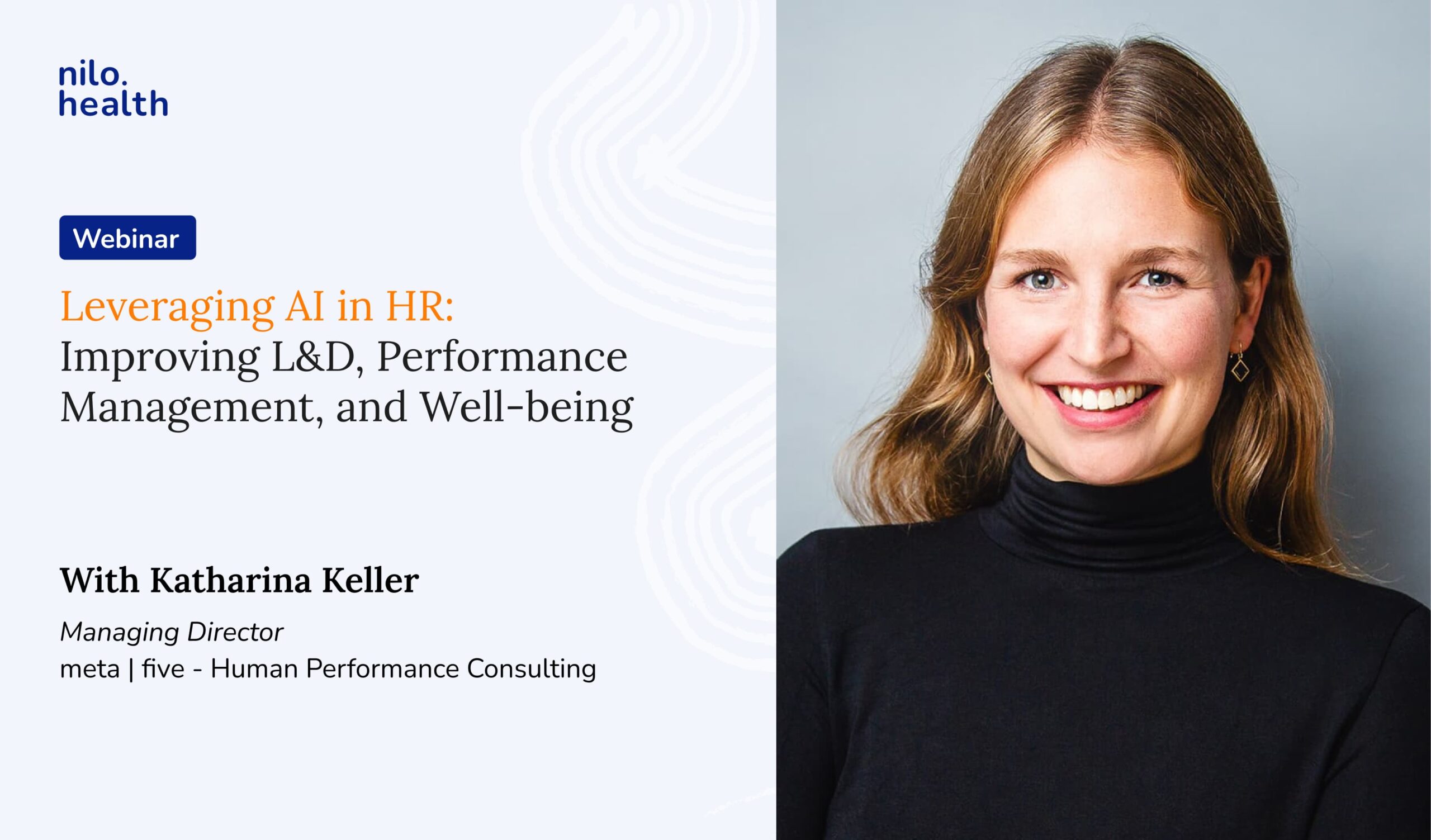Have you ever gone to work feeling like Eminem? Palms are sweaty, knees weak, arms are heavy? Whether you’re a CEO or an intern, it’s likely that you’ll feel work-related anxiety at some point in your life. The problem is not feeling anxiety – it’s what happens next.
How can you manage your work-related anxiety so it doesn’t damage your life? And how can you help your employees do the same? We’ve got the answers you need. Read on!

Whether you’re a manager or an employee, it’s likely you’ll deal with work-related anxiety at some point. Maybe you’ll even deal with your own work-related anxiety and a direct report’s anxiety at the same time! That’s why it’s great to have a plan in place. The better you can understand work-related anxiety, the better you’ll be able to prepare for it. In this article, we’ll break down exactly what work-related anxiety is and how you can safeguard against it and support suffering colleagues.
What is work-related anxiety?
Work-related anxiety, also known as occupational or job-related anxiety, is a type of anxiety that is triggered by the work environment or job-related tasks. It is a common mental health issue that can cause significant distress, impair job performance, and affect overall well-being. Work-related anxiety can manifest in different ways, such as excessive worry about job performance, fear of making mistakes, feeling overwhelmed, and difficulty coping with job demands. It can also lead to physical symptoms like headaches, stomachaches, and fatigue.
It’s important to remember that everyone’s experience with anxiety is different, so what works for one person may not work for another.
What should I do if someone I manage is experiencing work-related anxiety?
If someone you manage is experiencing work-related anxiety, there are several things you can do to help them:
- Start a conversation: Make time to sit down with the person and discuss what they are going through. Let them know that you care about their well-being and that you are there to support them.
- Listen: Allow the person to talk about their experiences and feelings. Try to understand their perspective without judgment or criticism.
- Offer resources: Provide information about resources that can help, such as employee mental health benefits, counseling services, or stress management workshops.
- Accommodate their needs: Consider making reasonable accommodations to help the person manage their anxiety, such as flexible work hours or a reduced workload.
- Check in regularly: Follow up with the person to see how they are doing and if there is anything else you can do to support them.
Remember, it’s important to take your mental health seriously and prioritize self-care in order to manage work-related anxiety.
It’s important to remember that everyone’s experience with anxiety is different, so what works for one person may not work for another. Be patient and supportive, and encourage the person to seek professional help if necessary.
What should I do if I am experiencing work-related anxiety?
If you are experiencing work-related anxiety, there are several steps you can take to manage it:
- Identify the source of your anxiety: Identify the specific factors that are causing you to feel anxious about work. Is it a particular project, task, or colleague? Understanding the root cause of your anxiety can help you develop strategies to address it.
- Practice self-care: Taking care of yourself is important when dealing with work-related anxiety. Make sure you are getting enough sleep, eating well, exercising regularly, and taking breaks throughout the day to recharge.
- Practice mindfulness: Mindfulness techniques such as deep breathing, meditation, and yoga can help you manage anxiety by calming your mind and body.
- Talk to someone: Consider talking to a trusted friend, family member, or mental health professional about your anxiety. They can offer support and guidance on how to manage your symptoms.
- Seek professional help: If your anxiety is severe and impacting your ability to perform your job, consider seeking professional help from a mental health provider. They can help you develop coping strategies and provide treatment options such as therapy or medication.
Remember, it’s important to take your mental health seriously and prioritize self-care in order to manage work-related anxiety.
How can I reduce anxiety in the workplace?
Here are some ways to reduce anxiety in the workplace:
- Encourage open communication: Create a work environment where employees feel comfortable expressing their concerns and stressors.
- Provide mental health resources: Offer access to an employee assistance program, mental health resources, and counseling services.
- Foster work-life balance: Encourage employees to take breaks, prioritize self-care, and maintain a healthy work-life balance.
- Offer training and support: Provide training and support for stress management, mindfulness, and other coping strategies.
- Reduce workload and unrealistic expectations: Ensure employees have manageable workloads, clear expectations, and realistic deadlines.
- Create a supportive work culture: Promote a culture that values mental health and wellness, and prioritize employee well-being.
- Regularly review and update policies and procedures: Continuously review and update workplace policies and procedures to ensure they support employee well-being and reduce stress.
Remember, creating a supportive and healthy work environment takes time and effort. It’s important to prioritize the well-being of your employees and implement strategies that work for your specific workplace culture.
And don’t forget to ask for help if you need it! The best help you can provide your employees is by offering a mental health benefit like nilo.health to reduce work-related anxiety and build healthy habits in the workplace. Book a demo today!






